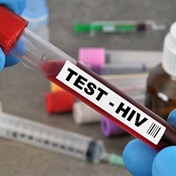Wits researchers have played a pivotal role in an Aids study published today in the journal, Nature Medicine, which describes how a unique change in the outer covering of the virus found in two HIV-infected South African women enabled them to make potent antibodies which are able to kill up to 88% of HIV types from around the world.
This ground-breaking discovery provides an important new approach that could be useful in making an AIDS vaccine.
Countrywide collaboration
The study, performed by members of the Centre for the Aids Programme of Research in South Africa (CAPRISA) consortium, involves scientists from Wits University, the National Institute for Communicable Diseases (NICD) in Johannesburg, the University of KwaZulu-Natal and the University of Cape Town, who has been studying, over the last five years, how certain HIV-infected people develop very powerful antibody responses.
These antibodies are referred to as broadly neutralising antibodies because they kill a wide range of HIV types from different parts of the world. This CAPRISA team initially discovered that two KwaZulu-Natal women, one of whom participated in the CAPRISA 004 tenofovir gel study, could make these rare antibodies.
Through long-term follow-up laboratory studies on these two women, the team led by Wits researchers and Centre for HIV and STI at the National Institute for Communicable Diseases of the National Health Laboratory Service-based scientists Dr Penny Moore and Professor Lynn Morris, discovered that a sugar (known as a glycan) on the surface protein coat of the virus at a specific position (referred to as position 332) forms a site of vulnerability in the virus and enables the body to mount a broadly neutralising antibody response.
HIV vs. immune response
“Understanding this elaborate game of ‘cat and mouse’ between HIV and the immune response of the infected person has provided valuable insights into how broadly neutralizing antibodies arise,” says Moore.
Morris, Head of AIDS Research at the NICD explained: “We were surprised to find that the virus that caused infection in many cases did not have this antibody target on its outer covering. But over time, the virus was pressured by body’s immune reaction to cover itself with the sugar that formed a point of vulnerability, and so allowed the development of antibodies that hit that weak spot”.
“Broadly neutralising antibodies are considered to be the key to making an AIDS vaccine. This discovery provides new clues on how vaccines could be designed to elicit broadly neutralising antibodies. The world needs an effective AIDS vaccine to overcome the global scourge of AIDS,” said Professor Salim Abdool Karim, Director of CAPRISA and President of the Medical Research Council, in his comments on the significance of the finding.
How broadly meutralising antibodies are made
While their existence has been known for a while, highly potent forms of broadly neutralising antibodies against HIV were only identified about 3 years ago. Until now, it was not known how the human body is able to make broadly neutralising antibodies.
This study discovered one mechanism by which these antibodies may be made. To make this discovery, the research team studied the target of some of these antibodies, a sugar that coats the surface protein of HIV, forming a site of vulnerability. By tracing back the evolution of the virus that elicited these antibodies, this team showed that this particular weak point was absent from the virus that first infected these women.
However, under constant pressure from other less powerful antibodies that develop in all infected people, their HIV was forced to expose this vulnerability over time. This allowed the broadly neutralizing antibodies to develop.
Analysis of a large number of other viruses from throughout the world, performed in collaboration with scientists from the University of North Carolina and Harvard University, suggest that the vulnerability at position 332 may be present at the time of infection in about two thirds of subtype C viruses (the subtype most common in Africa). Hence, if a vaccine is developed to target this glycan only, it may not be able to uniformly neutralise all subtype C viruses; as a result AIDS vaccines may need to attack multiple targets on the virus.
(Press release from Wits University, October 2012)




 Publications
Publications
 Partners
Partners














